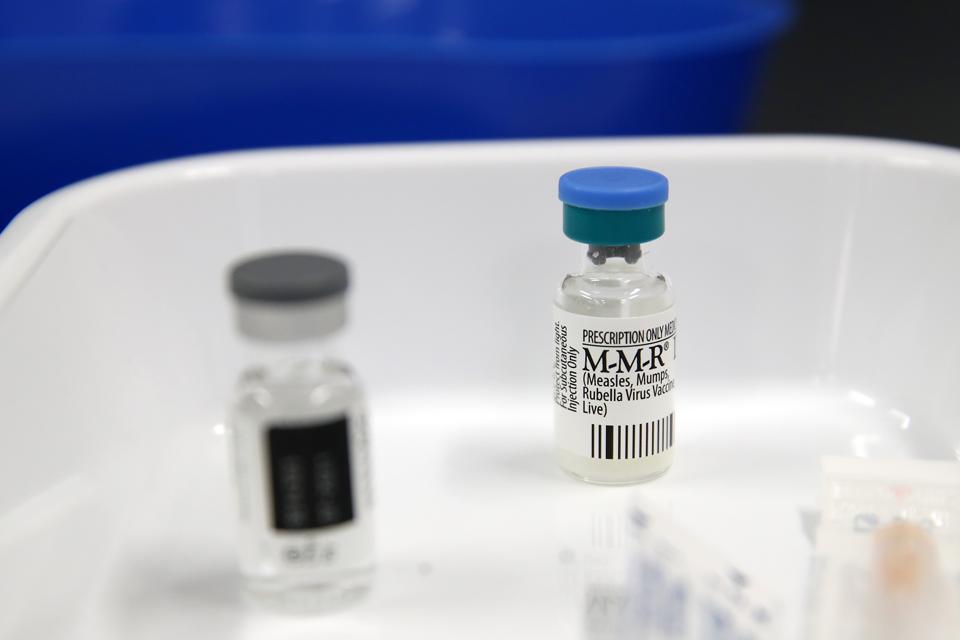121 cases of Measles have been reported across 18 states in the United States since January 1st of this year, according to the CDC. From January to March alone in 2024, the total number of measles cases represents 30% of the total number of cases reported since the beginning of 2020.
To put this into perspective, 13 cases of measles were reported in 2020, 49 in 2021, 121 in 2022, 58 in 2023 and now 121 this year. The rise in cases is particularly troubling since Measles was considered to be eradicated by the US since 2000, meaning the disease should no longer be constantly present, despite occasional outbreaks.
The rising number of cases are problematic for many reasons. Cases are rising largely because of international travel and decreasing vaccination rates among children. Low vaccination rates threaten herd immunity, which refers to the protection conferred onto a community against a contagious disease when a certain percentage of the population becomes immune, either through vaccination or previous exposure. In the case of Measles, herd immunity is achieved when 95% of the population is vaccinated.
However, 12 states and Washington D.C. have vaccination rates below 90% as of the 2022-2023 school year, per reports from NBC news. 82% of Measles cases this year occurred in unvaccinated individuals or in those whose vaccination status was unknown, according to the CDC.
More and more parents are becoming hesitant to vaccinate their children, and this vaccine hesitancy has been fueled by misinformation and false claims that vaccines are not effective and can be associated with autism. There is of course no scientific evidence that links vaccine uptake to the development of autism.
More vaccine hesitancy and less herd immunity opens the door for the resurgence of Measles in America. This disease is one of the most contagious viruses that spreads through respiratory droplets when an infected person coughs or sneezes. The virus can live on contaminated surfaces and stay in the air for up to two hours, and an infected person can spread the disease to 90% of people close to them if those around them aren’t immune. The highly contagious nature of the virus means outbreaks can escalate quickly, especially among communities with low vaccination rates and vulnerable populations.
Vulnerable individuals are more likely to contract the disease as cases rise. These individuals include infants who cannot get vaccinated against Measles, pregnant females and those with weakened immune systems; such as those on chemotherapy or organ transplant recipients. This means during active Measles outbreaks; these individuals are much more likely than the general public to experience serious illness and hospitalization from the virus. This year alone, 56% of the individuals reported to have contracted Measles were hospitalized in the US, according to the CDC.
More cases of Measles can also cause serious complications. While Measles usually results in fever, cough, runny nose, red eyes and a characteristic rash; it can also lead to more serious complications. These include pneumonia, encephalitis (inflammation of the brain) and rarely even death.
Finally, Measles outbreaks put a significant strain on healthcare systems throughout the country, particularly in areas where vaccination rates are low. Hospitals that are overwhelmed caring for measles patients means resources and healthcare personnel are diverted away from caring for other sick patients. Imagine coming to the emergency room with abdominal pain and not being seen by a physician for hours because your provider is trying to de-escalate a Measles outbreak in the community. This precise scenario becomes a reality when cases are on the rise.
The rising Measles cases in America pose a serious public health threat to all of us; and yet it could be entirely prevented with the uptake of vaccines. Children usually get vaccinated with the Measles, Mumps and Rubella vaccine between the ages of 12 and 15 months and again between the ages of 4 to 6. The first dose is 93% effective at preventing Measles, and the second is 97% effective.
Which parent wouldn’t want to protect their child?

